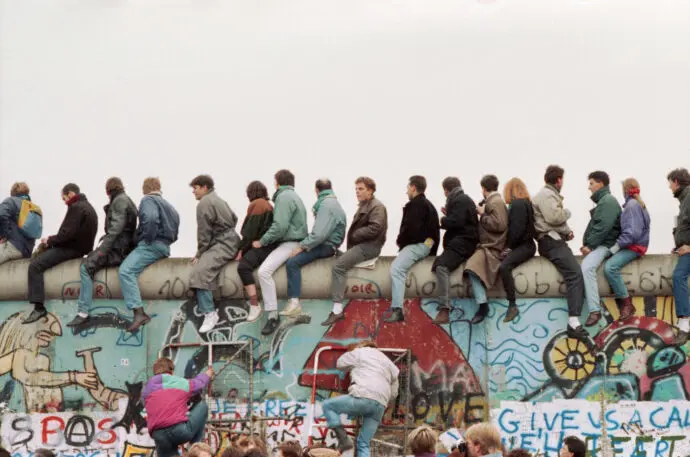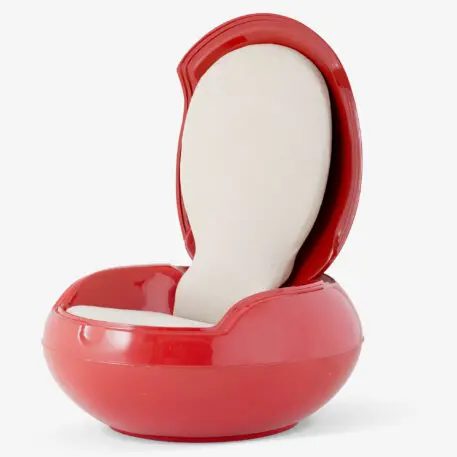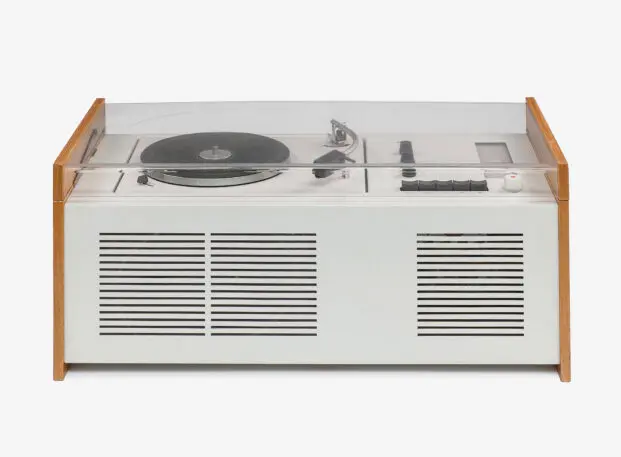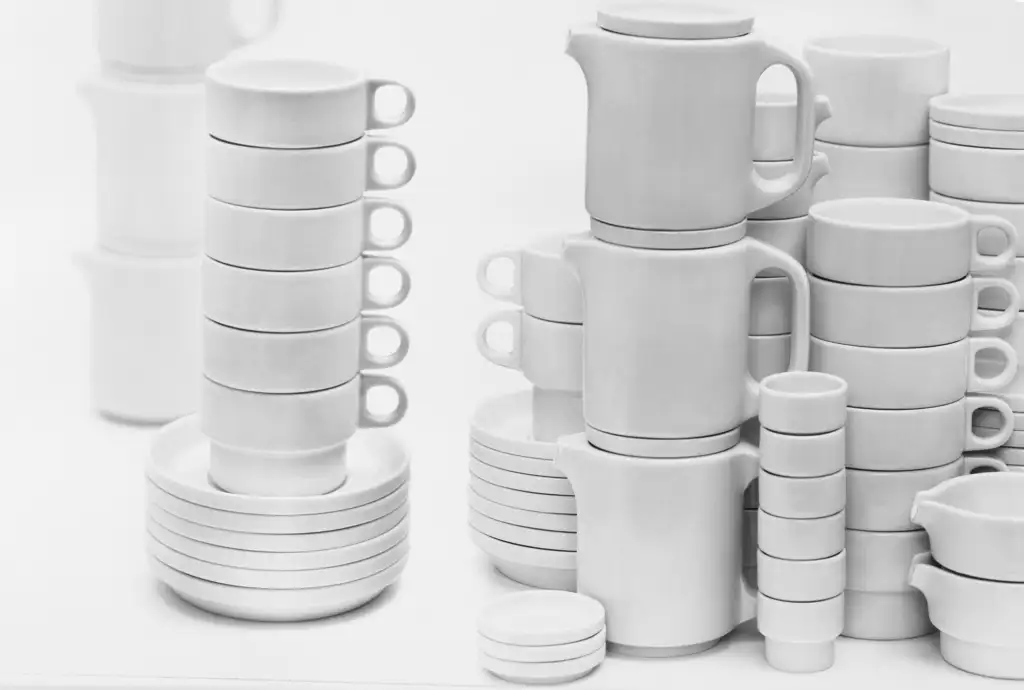From 1949 to 1989, Germany was split in two and stood at the center of Cold War tensions. The Federal German Republic in the West and the Soviet-aligned German Democratic Republic in the East were bizarro versions of each other, their shared history and language skewed through the lenses of geopolitics, economic systems, and propaganda.
A new exhibition at the Vitra Design Museum in Weil am Rhein, Germany, shows how these two very different countries were shaped by design in distinct but sometimes overlapping ways. The exhibition, German Design 1949-1989: Two Countries, One History, seeks to put the shared history of East and West in context by exploring the industrial, product, interior and graphic design trends that emerged in each country, and often ran parallel to each other.

“Post-war German design history has only been told in two separate narratives, one of the East and one of the West,” said Mateo Kries, director of the Vitra Design Museum, during a recent preview of the exhibition. For decades, those narratives have been rife with oversimplified generalities. “Western German design was associated with Bauhaus functionalism, Eastern German design was associated with retro-socialist design cliches, like cheapish colorful plastic objects,” Kries says. “We wanted to show with our project that reality was much more complex and more interesting.”
The exhibition explores the varying forces that shaped the two countries over those 40 years, from the initial division and post-war rebuilding to the eventual reunification process of the early 1990s. The exhibition includes material from the collections of the Vitra, in the former West, and the Kunstgewerbemuseum in Dresden, in the former East. Curators also pulled in objects from institutions, archives, and design schools throughout Germany. More than 250 individual exhibits are on display.
The exhibition explores how, despite the division, influences and even product designs transcended borders. “Both countries were still connected, not only through language and history, but also through design and material culture,” says curator Klára Němečková, of the Kunstgewerbemuseum in Dresden, where the exhibition will be shown later this year. She points to objects like so-called garden egg chair, a modernist chair that folds up like a makeup compact. The chair, designed in the West by Hungarian designer Peter Ghyczy, was only produced in the East, making its space-age gloss mistakenly associated with the East.

Though the East is often more associated with kitsch, the exhibition shows that designers there responded to its unique conditions to create some timeless work. One of the most successful pieces of East German design is the Simson S51 motorcycle, which epitomized the East’s open design principles. With clearly defined elements like a gas tank, motor and seat, pieces could be individually repaired or replaced. It was a reaction to the material shortages in the East, but also extended the life of the motorcycle.
Before its division, Germany had a strong design culture that influenced the evolution of design after the country split. Throughout the exhibition, tinges of Bauhaus modernism and its predecessor the Deutscher Werkbund can be detected in objects and designs from both sides.
Notable examples include the plexiglass-topped record player and telephone combination nicknamed “Snow White’s coffin,” designed by Dieter Rams in the West for Braun, and original globe lamps that could be used in various lighting configurations inside the Palast der Republik, the now-demolished home of the East German parliament and a center of cultural life in East Berlin. Other highlights include the pictogram designs by Otl Aicher for the 1972 Olympics in Munich, and modular furniture systems by the renowned East German designer Rudolf Horn.

“For a long time, the dominant opinion was that in the GDR no independent aesthetic culture was possible due to the communist state structure, so the design culture of the Federal Republic was considered superior,” says Němečková. “We want to show that East German design was not inferior to the West.”
But while design may have evolved in some similar ways in both the East and the West, they were still very distinct places. Kries says the exhibition is not intended to ignore these differences. “We are emphasizing and also discovering similarities and parallels and cross-pollinations across the walls which have been ignored for too long,” he says.
The exhibition runs at the Vitra Design Museum until September 5, and some of the exhibition is accessible through a series of online events over the next few weeks. After a run at the Kunstgewerbemuseum in Dresden later this year, an international tour is planned.
Recognize your brand’s excellence by applying to this year’s Brands That Matter Awards before the early-rate deadline, May 3.







